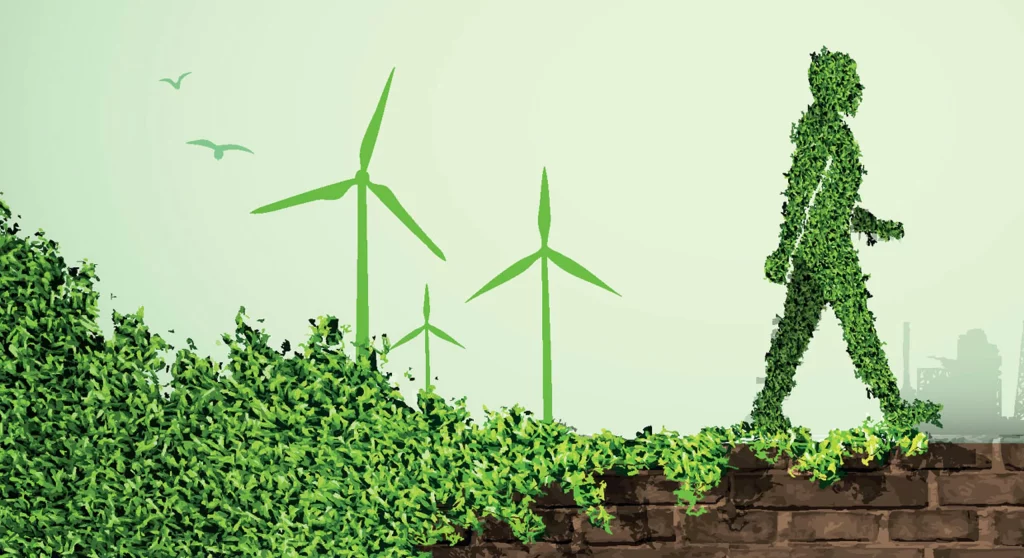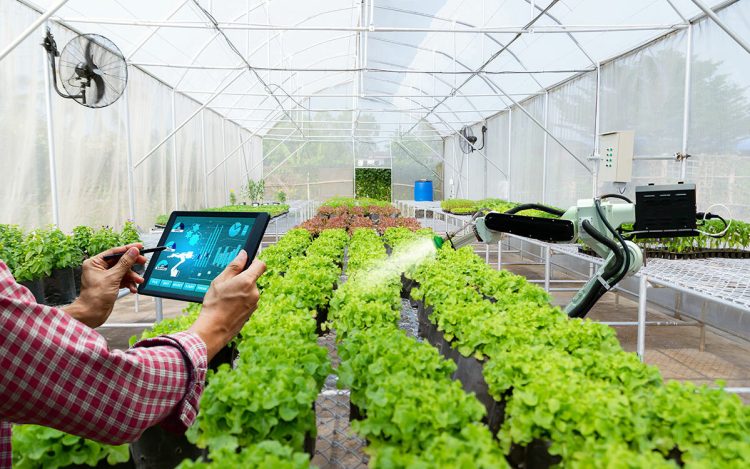Introduction: Green Tech’s Role in Mitigating Climate Change and Reducing Carbon Emissions
As the global climate crisis escalates, the need for sustainable solutions to reduce carbon emissions has become more urgent than ever. Green technologies, often referred to as “green tech,” have emerged as essential tools in the fight against climate change. These technologies aim to reduce environmental harm by minimizing the consumption of nonrenewable resources and decreasing greenhouse gas emissions. Green tech encompasses a broad range of innovations, including renewable energy sources, energy-efficient technologies, sustainable transportation solutions, and advanced systems that help optimize energy use across various sectors.
Carbon emissions, primarily from the burning of fossil fuels, are the main drivers of global warming. They contribute to the greenhouse effect, which increases global temperatures and disrupts ecosystems. To limit the adverse effects of climate change, there is an urgent need to transition to low-carbon and carbon-neutral technologies. This transition requires the widespread adoption of green technologies that promote sustainability and energy efficiency across industries and everyday life.
In this article, we will explore how green technologies can reduce carbon emissions by focusing on key innovations such as renewable energy, energy efficiency technologies, and electric mobility solutions. We will also examine the challenges that hinder the widespread implementation of these technologies and discuss the policies and investments necessary to accelerate their adoption. Ultimately, we will see that while green tech holds the key to mitigating climate change, achieving substantial carbon emission reductions requires collaboration, investment, and strong policy support.
Renewable Energy Technologies: Solar Power, Wind Turbines, and Geothermal Energy as Primary Green Tech Solutions
Renewable energy is at the core of green technology. Unlike fossil fuels, which release harmful carbon dioxide when burned, renewable energy sources produce little to no emissions during their operation. Solar power, wind energy, and geothermal energy are some of the most prominent green tech solutions that have gained traction in the effort to reduce carbon emissions. Let’s take a closer look at each of these technologies:
- Solar Power: Solar power is one of the most abundant and widely used forms of renewable energy. It harnesses the energy from the sun through photovoltaic (PV) panels, which convert sunlight into electricity. Solar energy systems can be deployed on rooftops, in solar farms, and even integrated into building materials. Over the past decade, solar technology has made significant advancements, resulting in lower costs, improved efficiency, and increased scalability. Solar power is a clean, renewable energy source that has the potential to significantly reduce carbon emissions in both residential and commercial applications.
- Wind Turbines: Wind energy is another powerful renewable resource that contributes to reducing carbon emissions. Wind turbines generate electricity by converting the kinetic energy of wind into electrical power. Onshore and offshore wind farms have become increasingly common in many parts of the world. In particular, offshore wind farms, located in bodies of water, can tap into stronger, more consistent winds, making them an ideal solution for areas with limited land space. Like solar power, wind energy is environmentally friendly, as it generates electricity without producing harmful emissions. As technology advances, wind turbines are becoming more efficient, and their installation costs are steadily decreasing, making wind energy a viable and scalable solution for the future.
- Geothermal Energy: Geothermal energy harnesses heat from beneath the Earth’s surface to generate electricity or provide direct heating for buildings. Unlike solar and wind power, which depend on weather patterns, geothermal energy is available 24/7, offering a stable and reliable energy source. Geothermal power plants can be built in areas with high geothermal activity, such as Iceland, the Philippines, and parts of the United States. While geothermal energy is not as widely used as solar or wind power, it has the potential to play a significant role in decarbonizing industries that rely on heat-intensive processes.
Collectively, these renewable energy sources have the capacity to replace fossil fuels as the primary energy providers, drastically reducing carbon emissions from the power sector. The transition to renewable energy is essential in achieving global climate goals, including the targets outlined in the Paris Agreement.
Energy Efficiency Technologies: Smart Grids, Energy-Efficient Appliances, and the Role of AI in Optimizing Energy Use
In addition to generating clean energy, improving energy efficiency is another crucial component of reducing carbon emissions. Energy efficiency technologies aim to optimize energy consumption, reduce waste, and lower overall energy demand. The implementation of these technologies can significantly reduce the carbon footprint of homes, industries, and cities.
- Smart Grids: A smart grid is an advanced electrical grid that uses digital technology to monitor and manage the flow of electricity more efficiently. Smart grids allow for real-time communication between energy producers and consumers, enabling better coordination of energy distribution. Through smart meters, homes and businesses can track their energy consumption, leading to more informed decisions about energy use. Moreover, smart grids facilitate the integration of renewable energy sources like solar and wind power into the grid, which helps address the intermittency of these energy sources. By optimizing energy distribution, smart grids can reduce energy waste and support a more sustainable energy system.
- Energy-Efficient Appliances: Energy-efficient appliances, such as refrigerators, washing machines, and air conditioners, use less electricity to perform the same tasks compared to traditional models. These appliances are designed to reduce energy consumption, which not only lowers carbon emissions but also saves consumers money on utility bills. Technological advancements in energy-efficient appliances have led to the development of devices with superior insulation, more efficient motors, and advanced energy management systems. By replacing older, energy-guzzling appliances with more efficient models, households and businesses can make a substantial impact on reducing their carbon footprints.
- The Role of AI in Optimizing Energy Use: Artificial intelligence (AI) and machine learning are being increasingly integrated into energy systems to optimize energy consumption. AI algorithms can analyze vast amounts of data to identify patterns in energy usage and recommend changes that can lead to greater efficiency. For example, AI-powered systems can adjust heating, cooling, and lighting in buildings to ensure optimal comfort while minimizing energy waste. AI is also being used in industrial processes to reduce energy consumption and carbon emissions by optimizing manufacturing operations and supply chains. With the potential to transform industries across the globe, AI is a key enabler in the push for energy efficiency.
By making energy use more efficient across residential, commercial, and industrial sectors, energy efficiency technologies help reduce the overall demand for energy and, consequently, carbon emissions.

Electric Mobility: Electric Cars, E-Bikes, and Other Green Transport Solutions
Transportation is one of the largest sources of carbon emissions globally, contributing to air pollution and climate change. Electric mobility technologies offer a cleaner alternative to traditional gasoline-powered vehicles, which emit significant amounts of carbon dioxide. The transition to electric vehicles (EVs) and other green transport solutions is essential for reducing carbon emissions in the transportation sector.
- Electric Cars: Electric vehicles are powered by rechargeable batteries rather than internal combustion engines, which produce carbon emissions. As the technology for electric vehicles continues to improve, they are becoming more affordable, practical, and accessible for consumers. EVs produce zero tailpipe emissions, which makes them a significant tool in the effort to reduce overall carbon emissions. In addition to reducing emissions, EVs also offer cost savings through lower operating and maintenance costs. The growing adoption of EVs, along with expanding charging infrastructure, is expected to be a key factor in decarbonizing the transportation sector.
- E-Bikes: E-bikes, or electric bicycles, are another green transport solution that can help reduce carbon emissions. These bikes use a battery-powered motor to assist riders in pedaling, making them ideal for short-distance commuting or recreational use. E-bikes offer an environmentally friendly alternative to cars for trips within cities and urban areas, reducing traffic congestion and air pollution. Moreover, they provide an accessible option for individuals who may find traditional cycling challenging due to terrain or physical limitations.
- Public Transportation and Electric Buses: Public transportation systems, including electric buses and trains, are also pivotal in reducing transportation emissions. Electric buses, which are already in use in several cities around the world, offer a cleaner alternative to traditional diesel-powered buses. By replacing fossil fuel-powered buses with electric ones, cities can significantly lower their carbon emissions while providing an efficient and sustainable mode of transportation for residents.
The adoption of electric mobility solutions like EVs, e-bikes, and electric buses is a crucial step in reducing emissions from the transportation sector and making cities more sustainable.
Challenges: High Initial Costs, Integration into Existing Infrastructure, and Scalability
While green technologies offer immense potential to reduce carbon emissions, several challenges must be addressed to facilitate their widespread adoption. These challenges include high initial costs, integration into existing infrastructure, and scalability:
- High Initial Costs: Many green technologies, such as solar panels, electric vehicles, and energy-efficient appliances, require significant upfront investment. While these technologies often offer long-term savings and environmental benefits, the high initial costs can be a barrier to adoption, especially in developing countries or among low-income households. Governments and private sector actors must work together to reduce the costs of green tech through subsidies, incentives, and technological advancements.
- Integration into Existing Infrastructure: Integrating new green technologies into existing infrastructure can be challenging. For example, updating the energy grid to accommodate renewable energy sources and smart technologies requires significant investment and planning. Similarly, building out the necessary charging infrastructure for electric vehicles requires coordination between local governments, utilities, and private companies.
- Scalability: Scaling green technologies to meet global demand is another challenge. While renewable energy sources like solar and wind have seen tremendous growth, there are still regions of the world where these technologies are underutilized. Overcoming barriers such as geographical limitations, local resistance, and regulatory hurdles will be critical to ensuring that green technologies can be deployed at a global scale.
Conclusion: Green Tech is Pivotal in Reducing Carbon Footprints, but Widespread Adoption Requires Substantial Investment and Policy Support
Green technologies have the potential to revolutionize the way we generate and consume energy, offering a pathway to significantly reduce global carbon emissions. From renewable energy solutions like solar, wind, and geothermal power to energy-efficient technologies and electric mobility, green tech is helping to mitigate climate change and promote sustainability.
However, for green technologies to reach their full potential, substantial investment in research and development, infrastructure, and policy support is required. Governments, industries, and individuals must work together to overcome challenges such as high initial costs, infrastructure limitations, and scalability issues. Only by creating supportive policies, fostering innovation, and promoting global cooperation can we ensure that green technologies play a central role in achieving a sustainable and low-carbon future.


















































Discussion about this post